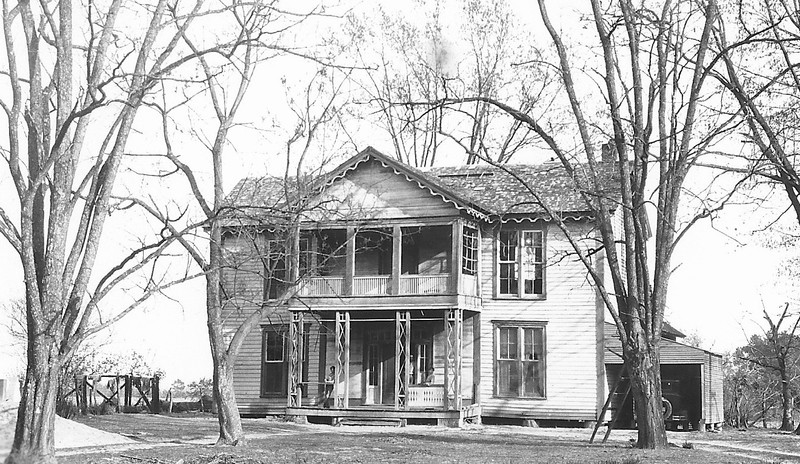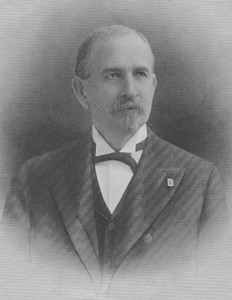Daniel W. Jones Homesite
Introduction
Text-to-speech Audio
This was the homesite of Daniel W. Jones, son of Dr. Isaac Newton Jones and nineteenth Governor of Arkansas. The home was a two story structure that Jones built after the Civil War. James Black lived in the home with the Jones family. It was here, on his 70th birthday, that Black attempted to tell Daniel W. Jones the secret of Damascus steel and the story of his life. However, after failing to remember the process, he rubbed his head with enough ferocity to cause bleeding while crying "My God! My God! It has all gone from me." He would later pass away at this house on June 21, 1872. This property is privately owned and not affiliated with Historic Washington State Park.
Images
Daniel W. Jones House, circa 1900

Daniel Webster Jones

Backstory and Context
Text-to-speech Audio
After the sudden death of Dr. Isaac Newton Jones in 1858, his wife and son, Daniel Webster Jones, continued to care for James Black in their home. When the Civil War broke out, the 21-year-old Jones stopped studying law to join the effort. He saw action at the Battle of Wilson’s Creek, Missouri. He was captured in the Battle of Corinth (then released in a prisoner exchange), and at the Battle of Vicksburg. He rose to the rank of Colonel.
After the Civil War, Jones built a home on the south side of Washington on Bois D’Arc Street. Jones practiced law in Washington and soon entered politics, serving as prosecuting attorney for the Ninth District, Arkansas Attorney General in the 1880s, and to the General Assembly in 1890. He was elected the Governor of Arkansas from 1897-1901,during which he won approval for the construction of a new state legislature building. Jones passed away in his Little Rock home due to complications from pneumonia on Christmas Day, 1917, and was buried in a Confederate uniform with an American flag pinned to it.
In 1870, James Black tried to tell Jones the secret of how he made the “Bowie Knife”, but was unable to remember the formula for the steel. Black died on June 21, 1872. Jones recorded Black’s life story and it was later published in the book “The Old Town Speaks” by Charlean Moss Williams.
The house had its second story removed in the 1930s and was fully demolished by the 1980s.
Today, a reconstruction of the home is located on the original site and is a private residence.
Sources
Batson, Jr., James L.. James Black and his Coffin Bowie Knives. Huntsville, Alabama. Batson Engineering and Metalworks, 2019.
"The Bowie Knife." Washington Telegraph (Washington) December 8th 1841. , p. 2.
Medearis, Mary. Washington, Arkansas : History on the Southwest Trail. Hope, Arkansas. Copies + Office Solutions, 1984.
Williams, Charlean Moss. The Old Town Speaks : Washington, Hempstead County, Arkansas, gateway to Texas, 1835, Confederate capital, 1863. Houston, Texas. The Anson Jones Press, 1951.
Williams, Joshua. Washington. Images of America. Charleston, South Carolina. Arcadia Publishing, 2014.
Williams, Joshua. Black, James, Encyclopedia of Arkansas . November 18th 2011. Accessed April 15th 2022. https://encyclopediaofarkansas.net/entries/james-Black-2534/.
Southwest Arkansas Regional Archives
Southwest Arkansas Regional Archives
